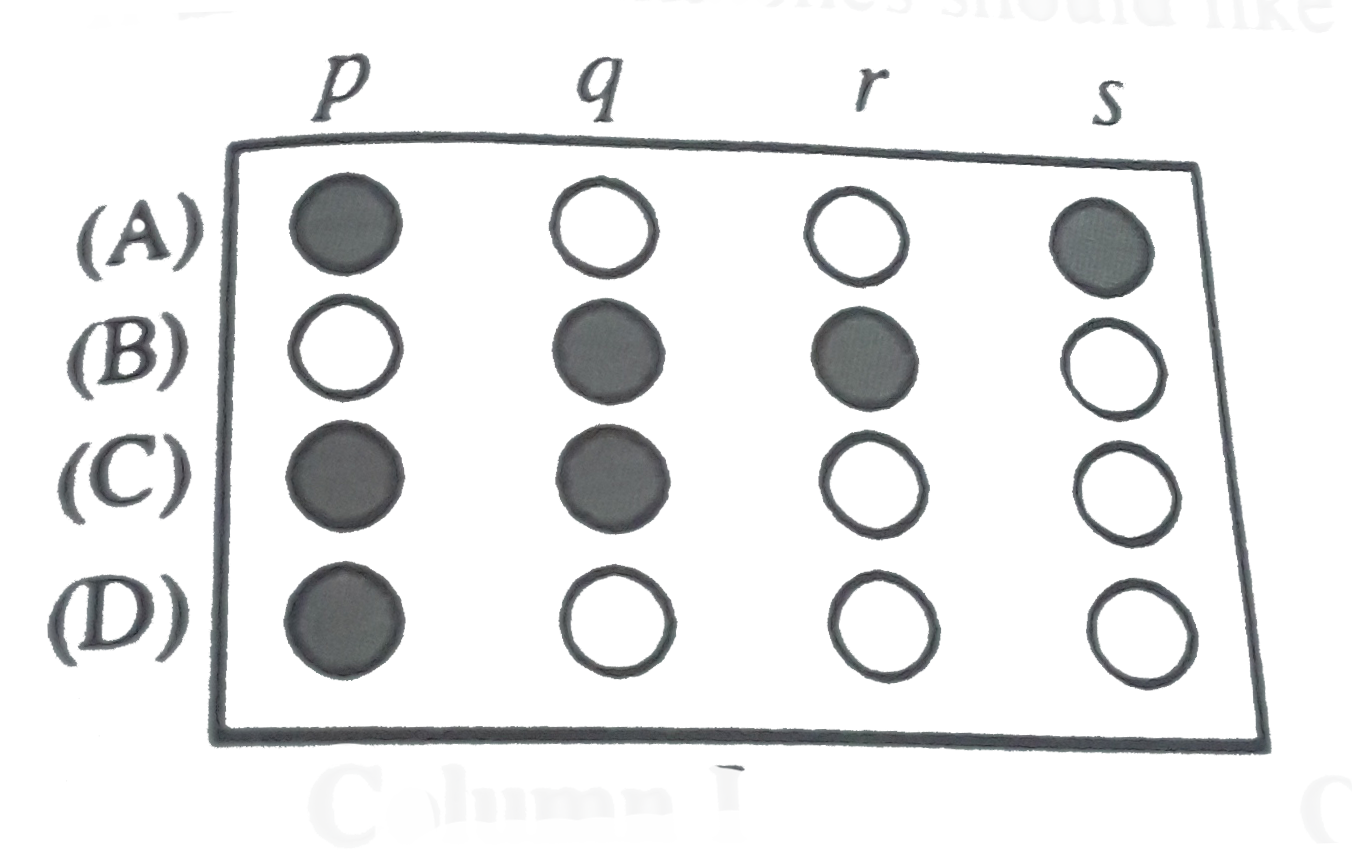COLUMN-ICOLUMN-II(A)∠OSO in SO2(p)1200(B)∠OSO in SO3(q)1030(C)∠CISCI in SCl2(r)1040(D)∠SSCl in S2Cl2(s)119030' Solution in Telugu
The correct Answer is:A-s; B-p; C-q; D-r
Topper's Solved these Questions
- BOOK - AAKASH SERIESCHAPTER - VIA GROUP ELEMENTSEXERCISE - LEVEL-II LECTURE SHEET (EXERCISE - IV Integer answer type Questions)9videos
VIA GROUP ELEMENTS
- BOOK - AAKASH SERIESCHAPTER - VIA GROUP ELEMENTSEXERCISE - PRACTICE SHEET - 1 (Single or more than one option questions)16videos
VIA GROUP ELEMENTS
- BOOK - AAKASH SERIESCHAPTER - VIA GROUP ELEMENTSEXERCISE - LEVEL-II LECTURE SHEET (EXERCISE-II Linked Comprehension type questions )31videos
VIA GROUP ELEMENTS
- BOOK - AAKASH SERIESCHAPTER - VA GROUP ELEMENTSEXERCISE - PRACTICE EXERCISE51videos
VA GROUP ELEMENTS
- BOOK - AAKASH SERIESCHAPTER - VII GROUP ELEMENTSEXERCISE - OBJECTIVE EXERCISE -455videos
VII GROUP ELEMENTS
Similar Questions
The atomicities of oxygen and sulphur are different. What is the ratio of the atomicities of sulphur to oxygen ?
View SolutionThe valency of sulphur in SO2−4 is :
View SolutionPassage-I :
Metallic sulphates can be obtained by reacting the metals (above hydrogen in ECS), or its oxide, hydroxide or carbonate with dil. H2SO4. Group IA metals also form hydrogen sulphates which can be isolated in solid. In general metal sulphates are soluble in water and crystallize with water of crystallization. Sulphates are thermally more stable than nitrates.
Among the metals given below, which metal will not give its sulphate on treatment with dil. H2SO4.02:19View SolutionWhich of the following reacts rapidly with oxygen in the air at ordinary temperature?
06:51View Solution(A): The bond dissociation energy of fluorine is less than bromine.
(R): In fluorine molecule, large lone pair electronic repulsions and appreciable internuclear repulsions are present.View Solution[D] Match the solutions in Column-I in Column-I with their osmotic properties in Column-II : {:(,"Column-I",,"Column-II"),("(a)",S_(1):0.1M" glucose,"S_(2)0.1M " urea","(p)",S_(1)andS_(2)" are isotonic"),("(b)",S_(1):0.1M " NaCl, "S_(2):0.1M Na_(2)SO_(4),"(q)","No migration of solvent across the membrane"),("(c)",S_(1):0.1" NaCl, "S_(2)=0.1MKCl,"(r)",S_(1)" is hypertonic to "S_(2)),("(d)",S_(1):0.1M CuSO_(4)", "S_(2):0.1M" sucorse","(s)",S_(1)" is hypotonic to "S_(2)):} [Note : Assume that the electrolytes are completely ionised.
02:02View Solution{:("Column-I","Column-II"),((A)sigma_(2s), "p 0"),((B)sigma_(2p_x)^**, "q 1"),((C )pi_(2p_x)^**, "r 2"),((D)pi_(2p_y)^**, "s gerade"):}
View SolutionColumn IColumn II(A)R/L(p)Time(B)C/R(q)Frequency(C)E/B(r)Speed(D)√ε0μ0(s)None
01:37View SolutionHere each question contains statements given in two column which have to be matched. Statements in columns I are labelled as A, B, C and D where as the statements in column II are labelled p, q, r and s. The answers to these questions are to be appropriately bubbled as illustrated in the following example.
If the correct matches should like the following.

Column IColumn II(A)SO2(p)Basic(B)H2SO4(q)Acidic(C)HNO3(r)Reducing(D)NH3(s)Oxidizing02:24View SolutionMatch the conditions/expression in Column I With statement in Column II. Normals at P,Q,R are drawn to y2=4x which intersect at (3,0). Then,
column Icolumn IIA.Area ofΔPQRp.2B.Radius of circumcircle ofΔPQRq.52C.Centroid ofΔPQRr.(52,0)D.Circumcentre ofΔPQRs.(23,0)01:16View SolutionMatch the compounds given in Column I with the oxidation state of cobalt present in it (given in Column II) and assign the correct code.
Column I (Compound)Column I (Oxidation state of Co)A.[Co(NCS)(NH3)5](SO3)1.+4B.[Co(NH3)4Cl2]SO42.0C.Na4[Co(S2O3)3]3.+1D.[Co2(CO)8]4.+25.+302:18View SolutionMatch Column -I with Column -II {:("Column-I","Column-II"),((A)"Sorel's cement",(p)MgCl_(2)),((B)"Albite",(q)MgO),(( C)"A salt of carnallite",( r) NaAlSl_(3)O_(8)),((D)"Glauber's salt",(s) Na_(2)SO_(4).10H_(2)O):}
01:12View Solution{:("COLUMN-I(Molecule)","COLUMN-II(Bond Angle)"),("A)" BF_(3),"p)" 88^(@)),("B)" NF_(3),"q)" 96^(@)),("C)" PF_(3),"r)" 103^(@)),("D)" ClF_(3),"s)" 120^(@)):}
01:52View SolutionCOLUMN-ICOLUMN-IIA)PCl5p)sp3B)ClO−4q) TetrahedralC)XeF2r) Trigonol bipyramidalD)SO−24s)sp3d
02:16View Solution(A) In SO_(2), the bond angle is 119^(0) whereas in SO _(3), the bond angle is 120^(0). (R ) S atom in both SO _(2) and SO _(3) is sp^(2)- hybridized.
02:14View Solution


